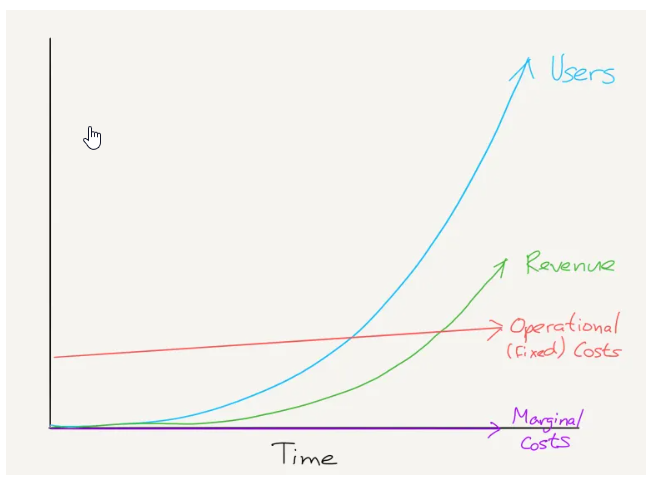Spotify, Netflix, and Aggregation
Courtesy of Ben Thompson, Stratechery
When Spotify filed for its direct listing in 2018, it was popular to compare the streaming music service to Netflix, the streaming video service; after all, both were quickly growing subscription-based services that gave consumers media on demand. This comparison was intended as a bullish one for Spotify, given that Netflix’s stock had increased by 1,113% over the preceding five years:

The problem with the comparison is that Spotify clearly was a different kind of business than Netflix, thanks to its very different relationship to its content providers; whereas Netflix had always acquired content on a wholesale basis — first through licensing deals with content owners, and later by making its own content — Spotify licensed content on a revenue share basis. This latter point is why I was skeptical of Spotify’s profit-making potential; I wrote at the time in Lessons From Spotify, in a section entitled Spotify’s Missing Profit Potential:
That, though, is precisely the problem: Spotify’s margins are completely at the mercy of the record labels, and even after the rate change, the company is not just unprofitable, its losses are growing, at least in absolute euro terms:
Moreover, it seems highly unlikely Spotify’s Cost of Revenue will improve much in the short-term: those record deals are locked in until at least next year, and they include “most-favored nation” provisions, which means that Spotify has to get Universal Music Group, Sony Music Entertainment, Warner Music Group, and Merlin (the representative for many independent labels), which own 85% of the music on Spotify as measured by streams, to all agree to reduce rates collectively. Making matters worse, the U.S. Copyright Royalty Board just increased the amount to be paid out to songwriters; Spotify said the change isn’t material, but it certainly isn’t in the right direction either.
I compared this (unfavorably) to Netflix in a follow-up:
Netflix has licensed content, not agreed-to royalty agreements. That means that Netflix’s costs are fixed, which is exactly the sort of cost structure you want if you are a growing Internet company. Spotify, on the other hand, pays the labels according to a formula that has revenue as the variable, which means that Spotify’s marginal costs rise in-line with their top-line revenue.
Both companies proceeded to do quite well in the markets over the next three-and-a-half years, with a decided edge to Netflix; however, the last six months undid all of those gains, with Netflix getting hit harder than Spotify:

Setting aside any analysis of absolute value, I think the relative trend is justified: I still maintain, as I did in 2018, that Spotify and Netflix are fundamentally different businesses because of their relationship to content; now, though, I think that Spotify’s position is preferable to Netflix, and has more long-term upside. Moreover, I don’t think this is a new development: I was wrong in 2018 to prefer Netflix to Spotify; worse, I should have already known why.




